REVIEW: Splash Cars Vibrantly Races Into Hue
Only because Color Splash was already taken.
Let’s set the scene for Splash Cars. In a bleak, isometric world devoid of color, you play as a vibrant car that restores color everywhere you drive, à la Splatoon, Ōkami, and Epic Mickey. Returning color to over 15 levels of towns, farms, and neighborhoods would be difficult on its own, but players must also deal with quickly-depleting gas and an active police force who are anxious to end your coloring crusade. Thus, coloring a certain percentage of the level, specified on the mission select screen, balanced against your gas tank is your focus. Achieving this percentage completes the level and unlocks another.
In each level, you control a car with either the L and R buttons, or one of the control sticks. Each level is filled with objects to color, such as buildings, signs, and trees. The environments in the level feel true to environments in real life, and every object and building in a level feels carefully and thoughtfully placed. While every level has an environment that is somewhat similar (no desert or ice biomes), the layout of each is varied enough to keep the player engaged, and most importantly, keep them working to figure out how to best tackle the level. Every map also varies in size from extra small to extra large.
While some objects in each level can be manipulated or destroyed, such as hay bales or fire hydrants, most objects cannot. The player must learn how to optimally route around these obstacles to master a level. While non-destructible objects might raise concerns about your car getting stuck, the level design is expertly laid out. While every level feels busy, the gaps provided are open enough to ensure your car will never be locked in place. That said, I do wish more items were destructible, if only for the sheer entertainment and mayhem it creates.
Players must also work against police cars crazed in their desire to ram your car any time you are within their radius. The police cars have no regard for traffic laws and will drive through yards, construction sites, and orchards to hunt you down. One might suspect that such devotion would inevitably lead the AI to get itself stuck, but thankfully, this is not the case. It’s important to note that this is entertaining at first, but long play sessions can cause the police cars to feel like an annoyance you learn to ignore.
In later levels, the number of police cars in an area can be so high that it borders on ridiculous, especially as their constant sirens drone in your ear. The good news is that multiple police cars in an area also leads to innovative placement, with police cars hiding just out of view, only to pop out from behind a building when you least expect it. This high number of police cars, along with the mention of non-destructible objects might make you think your car will get pinned in awkward spots. Mercifully, the developers designed your car so that it can bump police vehicles back a small amount should you hit them.
While other cars in the Splash Cars universe also work against you initially, they can be manipulated to work alongside you. Large street cleaner-like trucks ride along the streets and wipe away any color that you have placed, while small vehicles resembling lawn mowers also wipe away color while roaming the map in random patterns. These vehicles can be manipulated by driving near them, which switches them from cleaning up paint to spreading it. Learning where these lawn mowers are at the beginning of the level, as well as where and when street cleaners appear, is paramount to mastering later, more difficult levels.
The brilliant catch with these vehicles is that they are destructible, to some degree. If you ram a street cleaner, it will change color, but you’ll also destroy it. While watching a street cleaner fly halfway across the map is humorous, it also means you’ll have to wait for the cleaner to restart its route. When you have little gas, which gets guzzled up as a de-facto countdown timer, and multiple street cleaners are undoing your work, wiping out a cleaner on your side doesn’t benefit your cause. Thankfully, when a street cleaner you hit does appear again, it will retain its color and continue to paint the streets again.
While bumping a street cleaner is a temporary setback, the situation is worse with lawn mowers. If you destroy a lawn mower, it is gone for good until you restart the level. This extra bit of difficulty demands your consideration when barreling across the map, adding a much-appreciated layer of strategy.
Luckily, police cars don’t seem to have the ability to destroy street cleaners or lawn mowers. The AI for these vehicles is also well-designed, allowing them to navigate around each other quite well. I only witnessed one instance of two lawn mowers preventing each other from moving. The next several times I loaded the level, this didn’t happen.
Your car is also “destructible” in that every time you hit something or your car is hit (most likely by police cars), a damage meter increases a percentage. For me, this wasn’t noticeable until my car was 50% damaged. At this point, your car begins to move much slower, and things only get worse as you inch towards 100% damage. Surprisingly, if you receive 100% damage, the level doesn’t end. I appreciated this feature, given the prominence of police cars in later levels. I also found the situation of my 90% damaged car being trailed by 4 police vehicles matching my slow pace to be rather amusing.
About a third into Splash Cars, the difficulty spikes considerably, making it more important to pay attention to your damage. That said, damage to your car never feels like a great hindrance. While you do move much slower when damaged, you also use less gas. Also, when your car reaches 100% damage, any police car behind you will immediately turn around and ignore you for the rest of your attempt.
Each level has three stars to earn, and each star is dependent on the percentage of the map you have filled with color. One of the three stars is specifically tied to unlocking the next level, but unlike similar level-based games, you do not have to accumulate a certain number of stars to unlock stages. Most levels also don’t require you to earn the hardest star to progress. If you obtain the requisite color percentage to earn all three stars, a “Finish Now” button will flash on screen; this nice feature allows you to auto-complete the level.
Obtaining stars other than the level-unlock star will either give you a “free last save” (I’ll get to this later), a new vehicle to purchase, or one of two currencies in the game. One currency is blue and square-shaped and is less plentiful, whereas the other resembles a gold coin and is far more abundant. You use these currencies to purchase new vehicles and paint jobs for said vehicles.
In Splash Cars, there are 18 vehicles in total to own. While the first car is given to you, each car after must be unlocked, then purchased with an ever-increasing price tag. Most vehicles include an increased gas tank and higher “star rank” for destructibility. These cars are well worth the investment, as you’ll quickly find yourself thinking that if your car were a bit faster, you would have had enough time to beat a level.
As previously stated, you can unlock a car via collecting its respective star on a level. If you’re unable to do this, you can also use the rarer blue currency to unlock the car. Once a car is available for purchase, you can spend gold coins to acquire it. If you don’t have a car unlocked or the requisite number of blue currency, you can unlock it by paying a near 50% uptick of gold coins, which is labeled an “early access price.” You must use both blue and gold currencies to unlock and purchase paint jobs, and unlike cars, you cannot unlock paint jobs by collecting stars on a map.
Gold currency can also be used to repair your car and refill your fuel if you run out of gas. You only get one chance to do this, so sinking more and more coins on a singular attempt is not possible. The price to use this feature also slightly increases every time you opt in (there is an upper limit), making for difficult decisions later in the game. I would recommend that you only use this feature if you are less than 10% away from obtaining the desired color percentage; you will probably fail otherwise and have wasted your gold currency.
You can also use a “free last save,” which is a reward from a few stars, and it gives you the same effect without spending gold currency. Most importantly, there aren’t any microtransactions, nor can you use real money to purchase a “free last save.” That said, the mechanics behind vehicle unlocks, purchases, as well as the double currency suggest microtransactions were once a part of this experience.
Anytime you try a level, two gauges will rise, which indicate daily meters driven and total meters driven. Daily meters driven earns you extra blue and gold currency, while total meters driven leads to a rank-up, with a max rank of 32. Each new rank nets a new, valuable achievement, including a larger overall canister size, a smaller police radar, a lower objective difficulty, or the unlocking/enhancing of power-ups.
Power-ups appear on the map throughout the level as small, glowing circles that you must run over before they disappear. They usually appear on the map at the start of a level, and disappear a few seconds after. Thankfully, power-ups will reappear in differing locations throughout the course of a level, and they can be quite useful. One power-up, the Super Switch, will call in either a tank that shoots out paint and electrifies police cars, or a hotrod that zooms across the map. Another, titled Brush Up, will enlarge the size of your car and leave a massive color trail as you drive. There are 8 power-ups in all, and each holds important uses depending on your fuel level, your damage, and the police cars in your vicinity.
Although the power-ups are never haphazardly placed in inaccessible locations, they can sometimes pop up behind a building, making them difficult to see. While certainly annoying, it’s important to note that this is a rare occurrence. Along with random placement, the types of power-ups to drop in are also random. The combination of random placement and abilities mean that with the right luck, you should be able to pass a difficult level after a few attempts.
Power-ups also lend to more strategy-fueled gameplay. When you start a level, if you don’t press anything, the isometric view will zoom out, allowing you to see the entire map. The optimal way to start a level is to wait for the level to zoom out, locate where the best power-up is, and immediately drive to it. From here, capture any lawn mowers and street cleaners on the map, and you should have quite a leg up.
Gas canisters and the two currencies are also placed randomly on the map. These will extend your “life” and aid you in purchasing a better vehicle later. If your gas is already full, picking up a gas canister will only waste this resource, so it’s best to pick these up strategically. Gas canisters and currency, unlike power-ups, do not respawn on a level, so they must be handled with care.
Turning from the analytical to the creative, the art style of Splash Cars is endearing. The cars themselves are detailed, resembling the craftsmanship found on branded toy cars, and the art style of levels uses a simple, polygonal approach, which I find to be charming. I also believe a complex environment would make following your car and identifying important objects more difficult, so this art style is beneficial to gameplay as well.
The soundtrack, while not horrid, is extremely limited. Believe it or not, Splash Cars has just one song. This song is fairly varied, and some parts feature a noise reminiscent of a car horn, so it fits thematically as well. I also never found the song grating enough to where it distracted me from playing, but I might feel different upon returning to the game. If you are playing in short bursts, you’ll probably never be bothered by the lack of soundtrack variety. If the music does become an annoyance, the main and pause menus allow you to mute the music (as well as any sound effects). You might find your time better spent listening to a podcast or talking with friends while playing.
Speaking of friends, Splash Cars also has a multiplayer mode. In this mode, at least two players pick a team of either ‘color’ or ‘gray,’ a car that’s been unlocked, and two power-ups (with the exclusion of Super Switch). Once the selections have been made, the cars enter a small map that is 50% gray and 50% color. The cars then face off, with the color team leaving color behind, while the gray team must remove color. Team that takes up a greater percentage of the map when time’s up is the winner.
Each player must track damage and fuel levels, as these will affect your ability to continue. Depending on the map, a police car is placed to bolster damage potential, and at least two gas canisters will spawn for refueling purposes. Depending on the map, lawn mowers can also spawn to work for or against you, depending on who snags them. If you are a particularly uncivil opponent, you might try to quickly gather all gas canisters to almost guarantee victory against your opponent. If you run out of gas before your opponent, you must sit and idle while your opponent motors on. The match does stop prematurely if you both run out of gas, which means you don’t have to sit there in agony as the timer runs out.
When a player obtains a victory, an overview of the map is shown, alongside a counter of how many wins each player has. While each player must rejoin after every match, the game keeps track of player wins, even if you switch teams. As long as you remain in the multiplayer mode, your stats will be right there with you. The game even keeps track of what controller a player is using! That said, each player must use two Joy-Cons or a Pro Controller to play, which is a bit odd, as controlling a car with a single Joy-Con would certainly be doable.
Unfortunately, the multiplayer mode doesn’t let you choose maps, so I’m not sure how many are included in this mode. From my experience, I know at least 5 different maps exist, and they appear different from any map that I came across in single player.
Conclusion
By this point, I’m sure you’re questioning the origins of Splash Cars. While I didn’t outright state it in my review, it’s pretty apparent this game was previously a mobile release. The daily level meter, the two currencies, the unlocking and purchasing of the vehicles, and the sudden spike in difficulty about a third of the way through the game all speak to a mobile game laden with microtransactions.
There are other signs that speak to the game’s mobile origins. The L and R buttons feel much more intuitive than using the left or right sticks, and the game is much easier in handheld mode than it is docked. While Splash Cars doesn’t use Switch’s touch screen in any way, I caught myself tapping the screen multiple times to try and push a button.
After doing a bit of research, I learned that Splash Cars did indeed get its start on mobile. While that made me slightly wary of the experience, the game’s strategic elements and charm won me over. The game sometimes feels grindy, especially when you’re farming coins for new cars, but the meters at the end of each attempt are generous, and push you towards a successful run. Reaching a new rank on the total meters driven is especially helpful, as some of the ranks entitle huge boons such as a massive upgrade to a power-up, or a boost to the amount of fuel in a gas canister.
There’s a lot of appeal in the visuals and base gameplay of Splash Cars, but what kept me coming back was the strategy. I really enjoyed the amount of thought the game necessitates if you’re trying to get all three stars in a level. As I studied a level’s map and analyzed which path would be best suited for victory, I slowly tweaked my strategy until I was finally able to obtain all three stars. If you’re someone who feels that pull to three-star levels in other games, you’ll no doubt spend hours doing the same in Splash Cars.
I certainly recommend Splash Cars, especially if you play in short bursts. During my initial sit down with the game, I sat and played for hours. While this speaks to the fun of the game, I do feel that this caused some aspects, such as police cars and music, to weigh more heavily on my mind. I probably would have enjoyed this title more if I played a few levels, went away, then came back later in the day.
Splash Cars seems perfect for those looking to kill some time during long road trips, as well as families who enjoy pass-and-play gaming. The thing is, I don’t fall into either of those groups and I still had a blast. While I have tons of games to play, I still plan to go through and get all the stars in Splash Cars because I enjoyed the game that much.
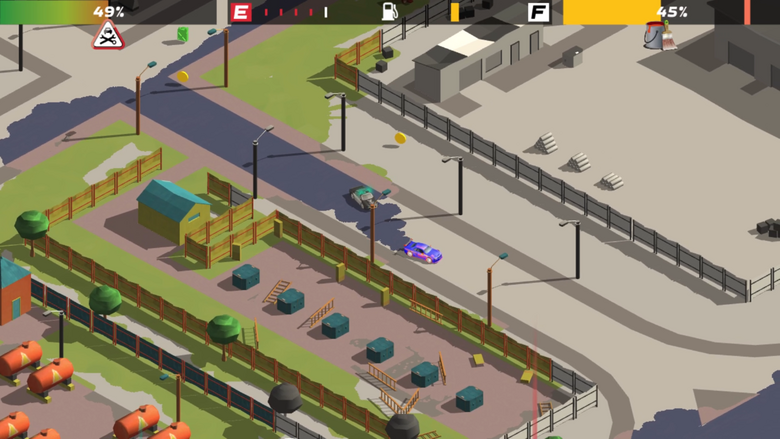
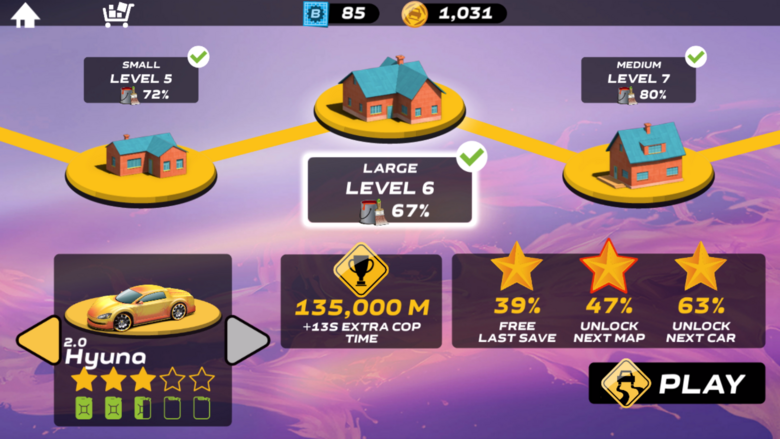
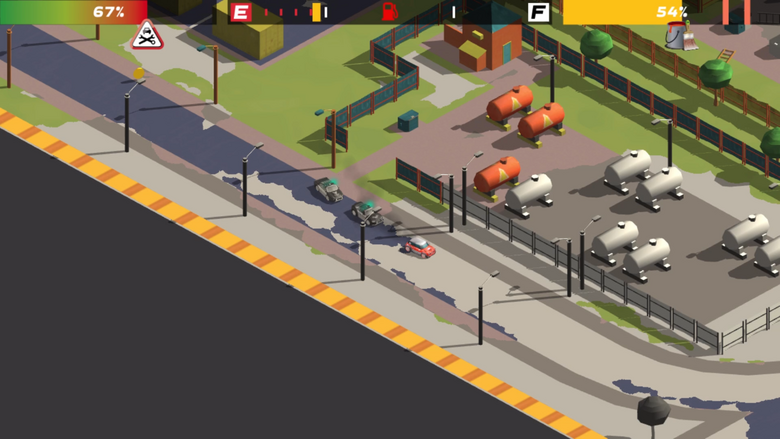
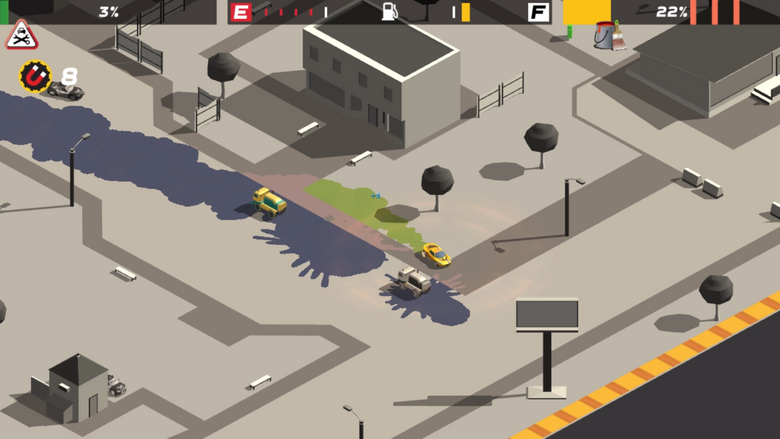
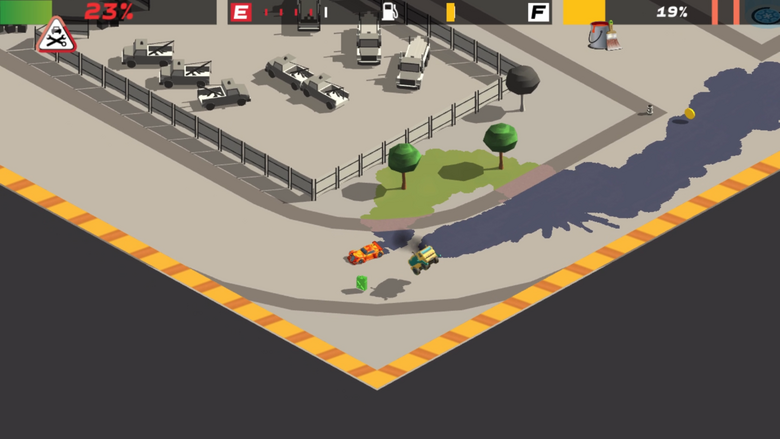
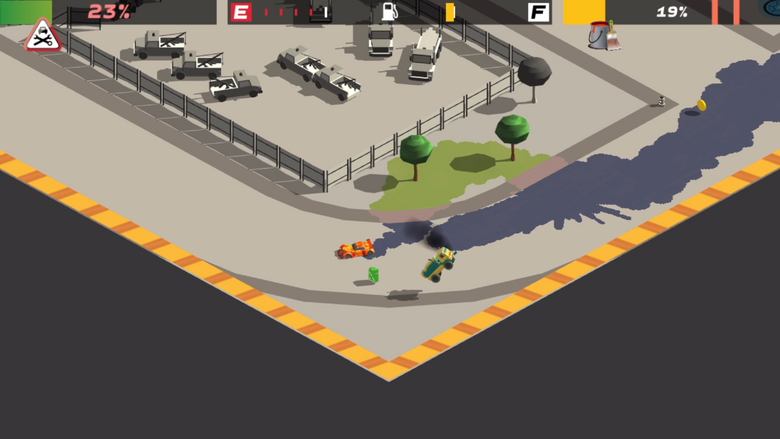
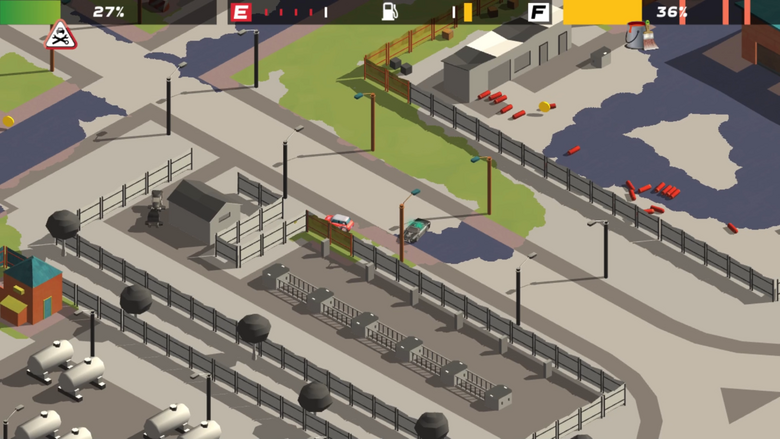
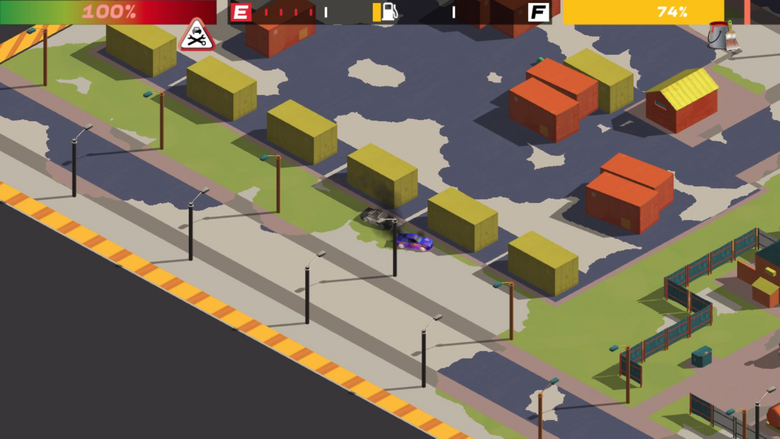
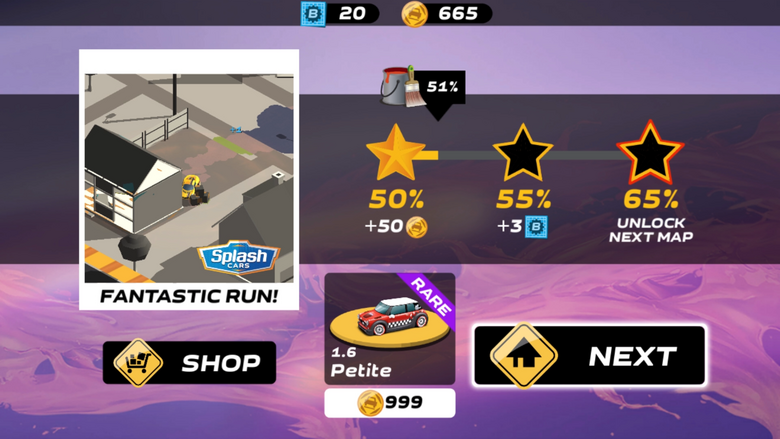
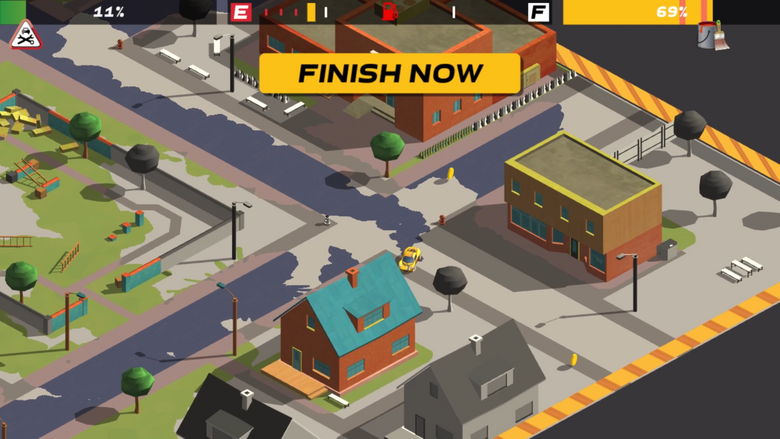
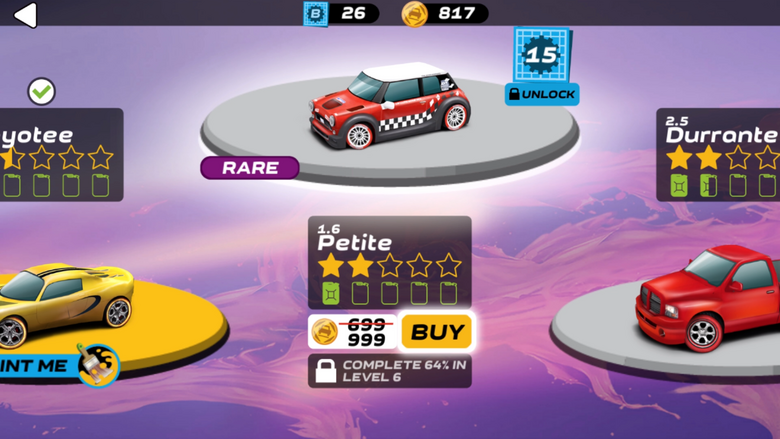
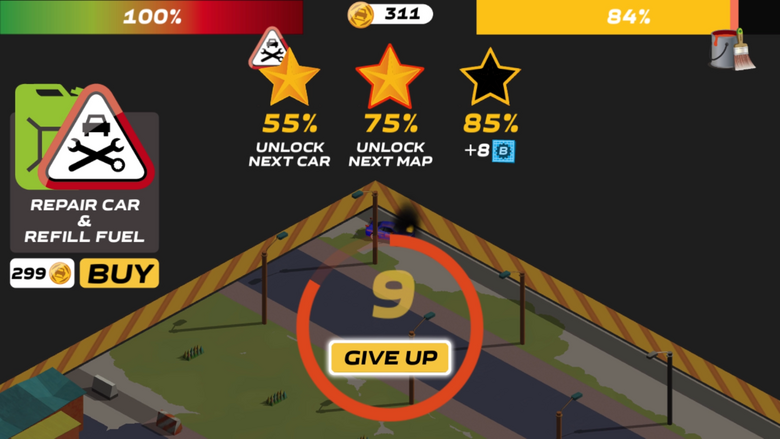
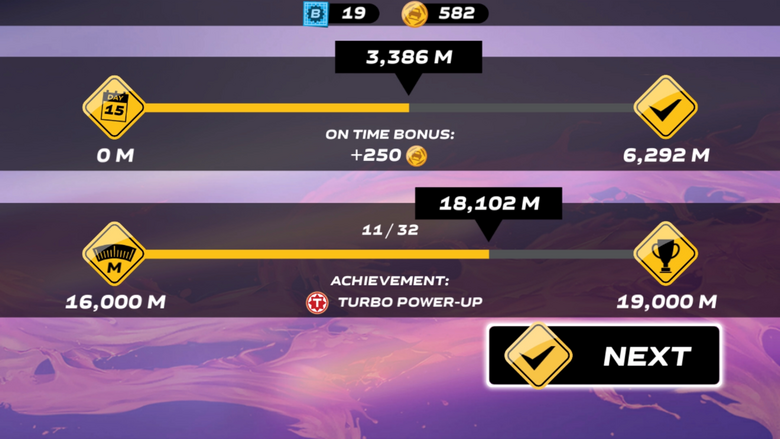
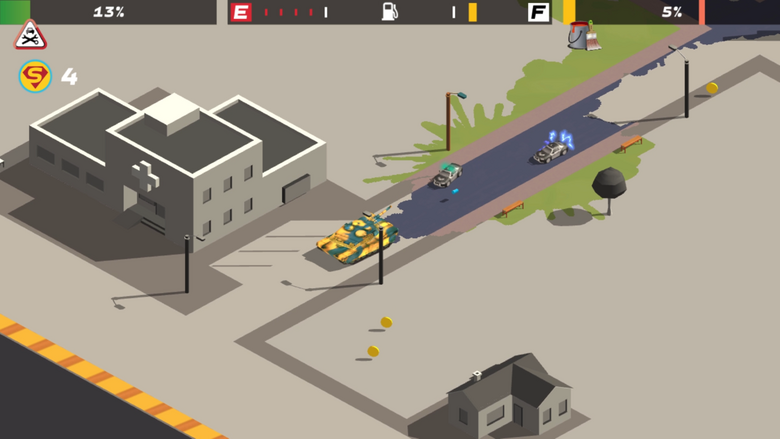
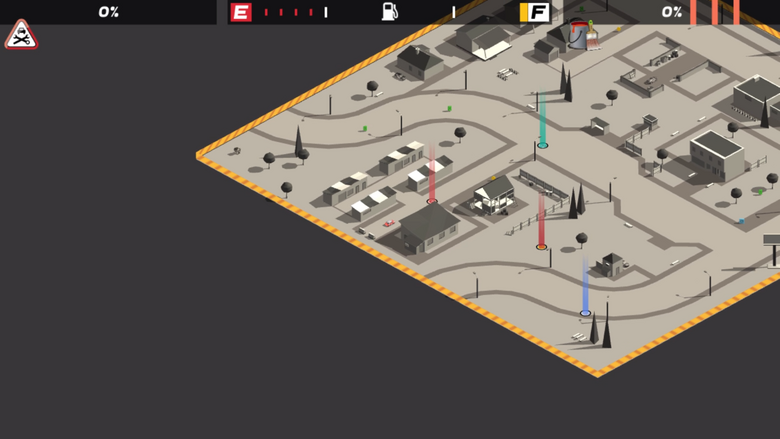
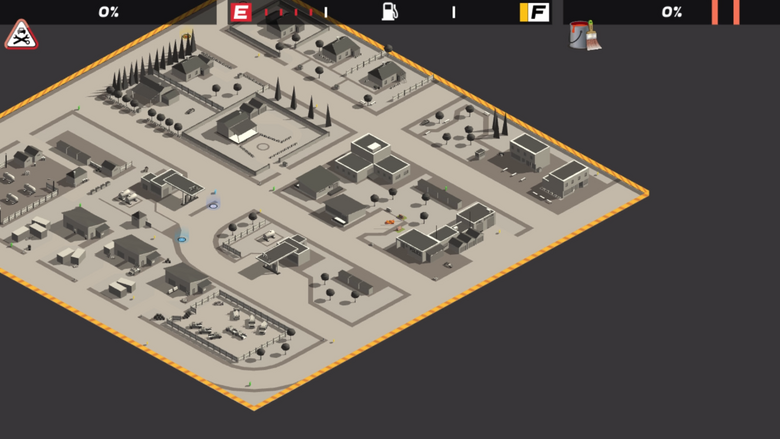
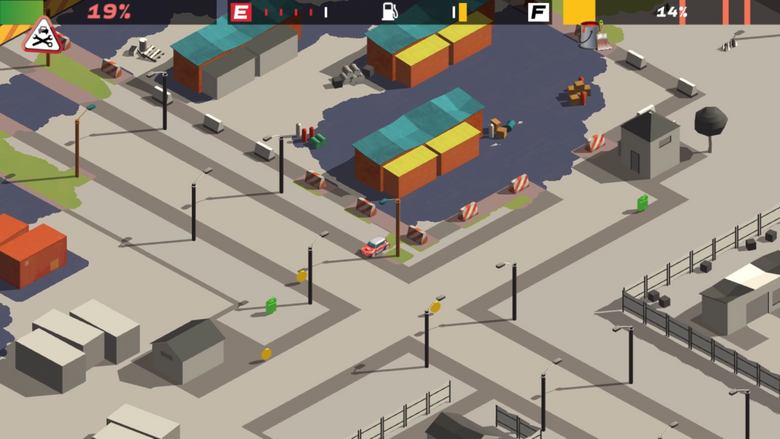
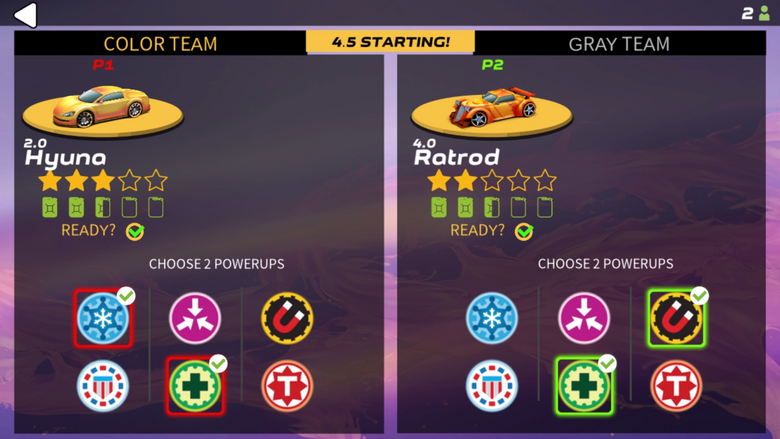
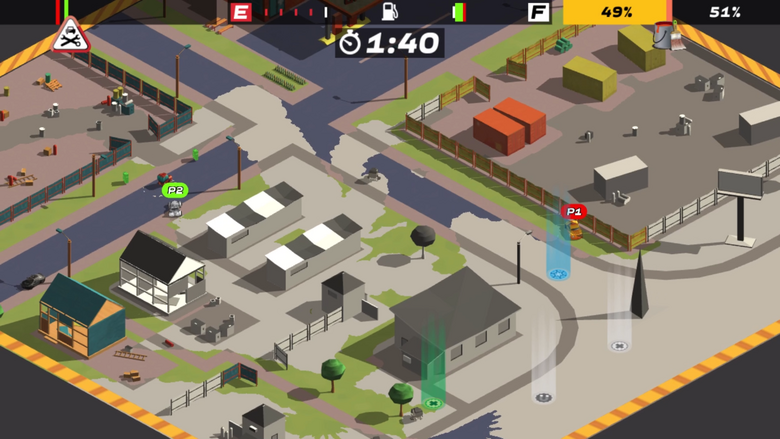
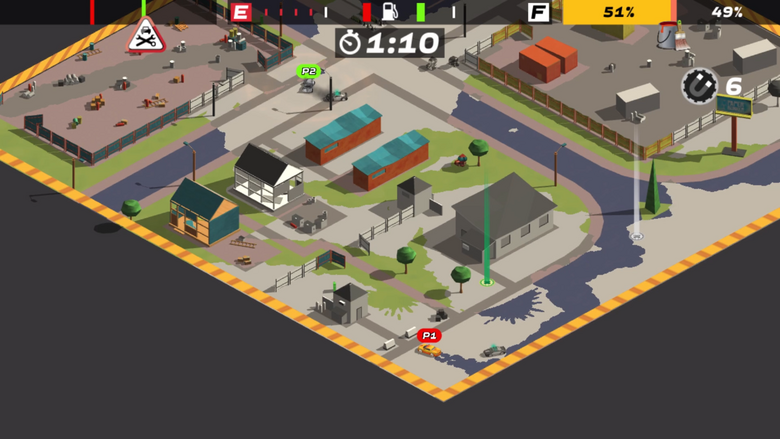
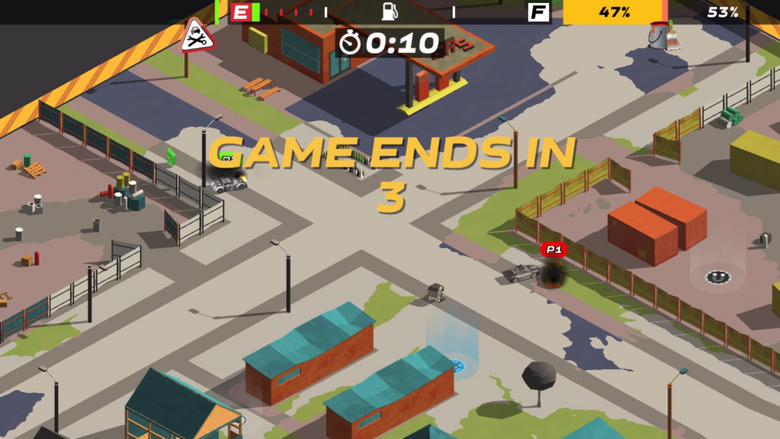
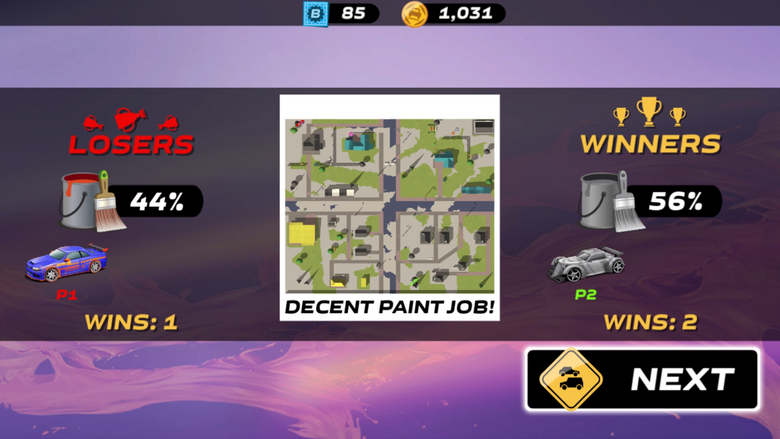
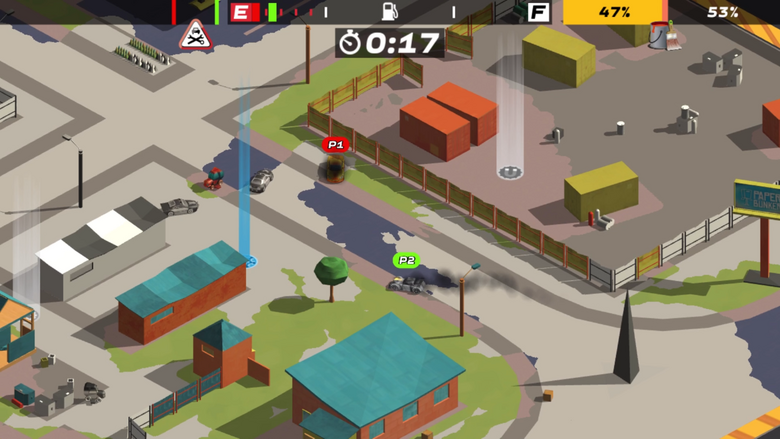
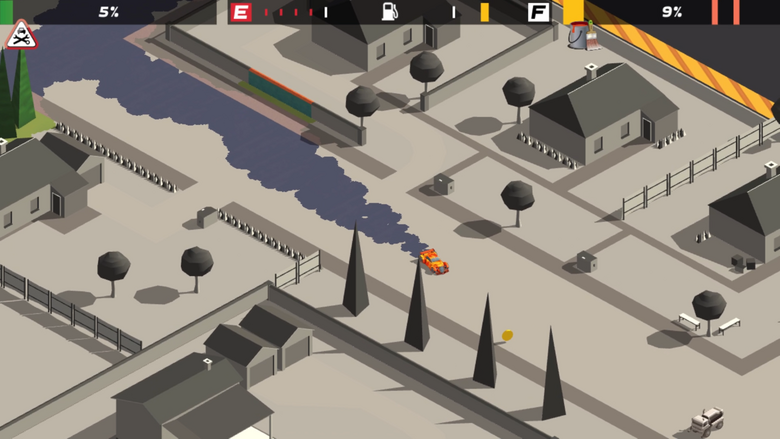

Comments (0)